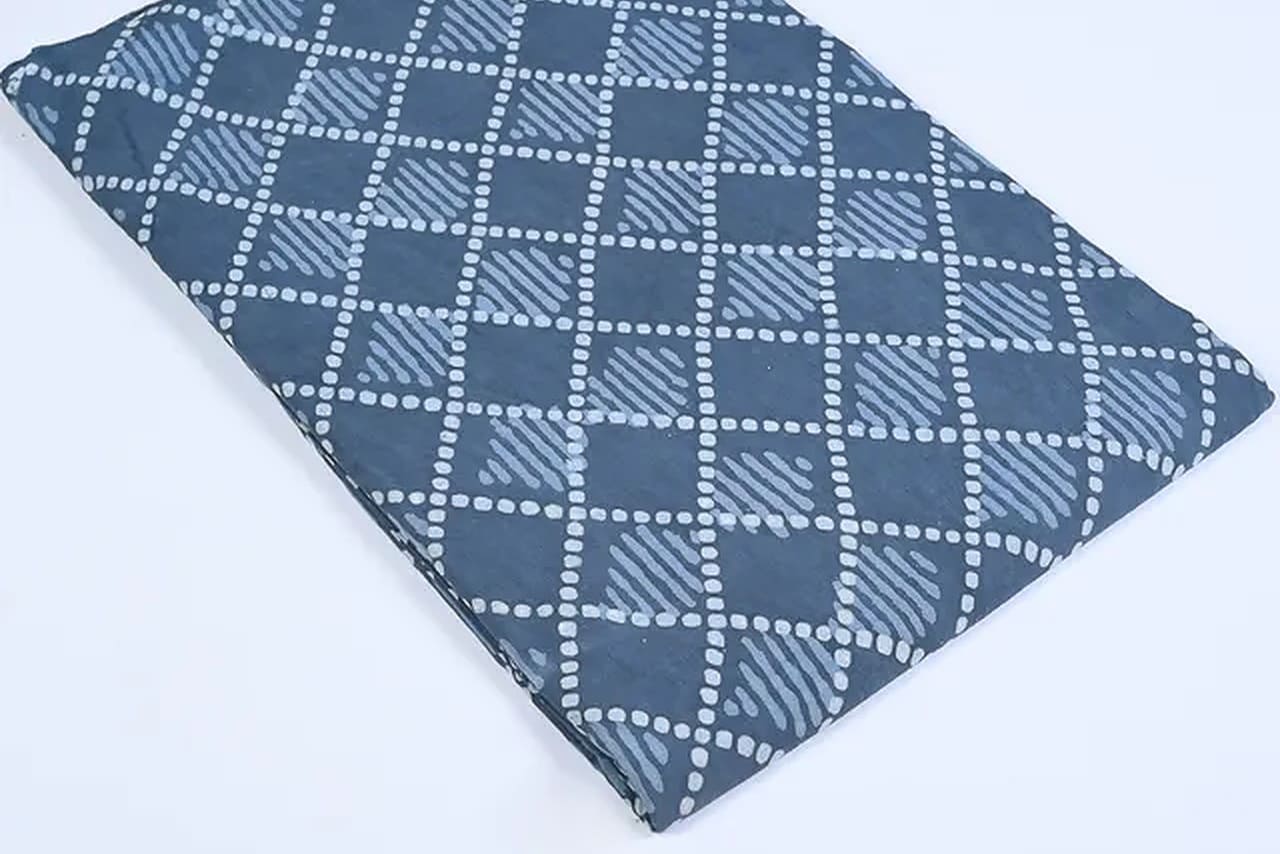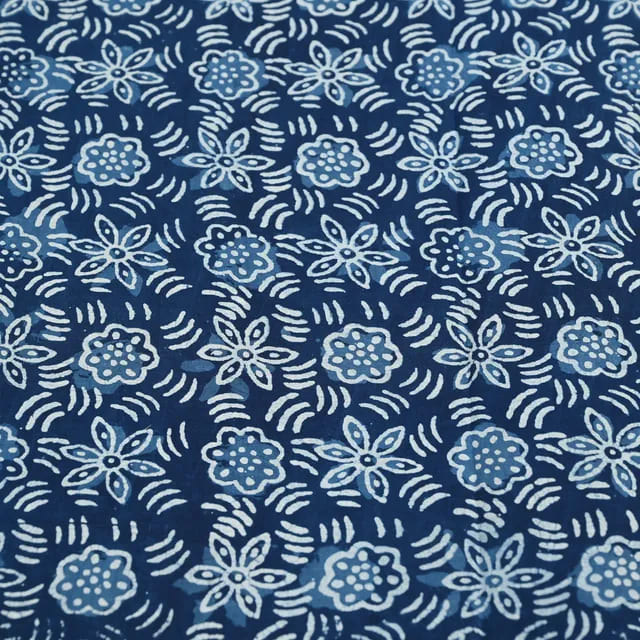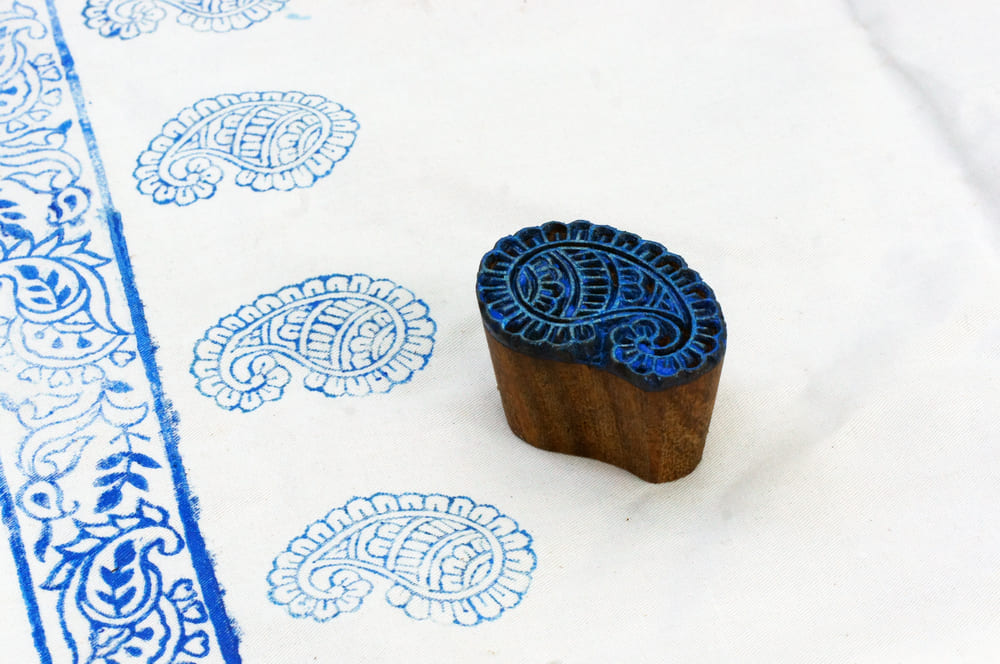- Home
- Blogs
- FabCouture
- The Beauty and Elegance of Dabu Print: A Timeless Craft
- The Beauty a...
The Beauty and Elegance of Dabu Print: A Timeless Craft
- By FabCouture
- • Jun 01, 2023

Introduction
Welcome to our thorough guide to the fascinating world of Dabu print fabrics! As passionate advocates of exquisite craftsmanship and artistry, we are delighted to provide you with a detailed exploration of this traditional textile printing technique. In this article, we will delve into the history, process, and unique characteristics of Dabu print, immersing ourselves in the rich heritage and beauty it holds. Join us on this enchanting journey as we unravel the secrets behind this timeless craft.

Understanding Dabu Print
Dabu print, also known as mud resist printing, is an ancient Indian textile art form that dates back centuries. This intricate printing technique involves a meticulous process of creating elaborate patterns on fabric using a mixture of mud, dye, and resist paste. The result is a stunning interplay of vibrant colors and intricate designs that captivate the senses.
The Origins and Cultural Significance
To truly appreciate the essence of Dabu print fabric, we must explore its origins and cultural significance. This traditional craft originated in the state of Rajasthan, India, where it gained immense popularity among local artisans. Dabu print has strong cultural linkages that reflect the area's rich tradition and history.
The Dabu Print Process

Step 1: Preparing the Fabric
The Dabu print process begins with carefully selecting the fabric, usually cotton or silk, as they readily absorb the dyes. The fabric is then washed and treated to remove any impurities, ensuring a smooth surface for the printing process.
Step 2: Creating the Mud Resist
The heart of Dabu print lies in the creation of the mud resist, which acts as a barrier against the dyes. A mixture of natural ingredients, such as clay, gum, and lime, is combined to form a thick paste. Skilled artisans apply this paste onto the fabric, using hand-carved wooden blocks or stencils to create intricate patterns.
Step 3: Sun Drying
Once the resist paste is applied, the fabric is left to dry in the sun. This step is crucial, as the heat helps the mud resist set and adhere firmly to the fabric. The sunlight also plays a role in the chemical reaction between the dyes and the fabric, resulting in beautiful color variations.
Step 4: Dyeing Process
After the resist paste has dried, the fabric undergoes a dyeing process. Natural dyes, derived from plants, roots, and flowers, are carefully chosen to achieve a wide spectrum of hues. The fabric is immersed in the dye bath, and the areas covered by the mud resist remain untouched, creating a striking contrast between the dyed and undyed portions.
Step 5: Washing and Drying
Once the fabric has absorbed the desired colors, it is washed to remove any excess dye and mud resistance. This reveals the true beauty of the Dabu print, with its intricate patterns and vibrant shades. The fabric is then carefully dried, allowing the colors to set and the artwork to flourish.
Unique Characteristics of Dabu Print
Dabu print possesses a distinct charm that sets it apart from other textile printing techniques. Here are some of its unique characteristics:
1. Handcrafted Excellence
Each Dabu print fabric is a work of art made by talented craftspeople who spend countless hours honing their craft. The intricate designs and precise detailing showcase the unparalleled expertise of these craftsmen.
2. Organic and Sustainable
One of the most captivating aspects of Dabu print is its commitment to sustainability. It is the perfect option for environmentally conscious consumers because it uses natural dyes and eco-friendly components to ensure minimal environmental impact.
3. Artistic Versatility
Dabu print offers endless possibilities for artistic expression. From bold and geometric patterns to delicate floral motifs, this technique can adapt to various design aesthetics, making it a versatile option for fashion, home decor, and more.
4. Timeless Elegance
With its deep cultural roots and timeless appeal, Dabu print transcends fleeting trends and remains a symbol of elegance and sophistication. Garments and furnishings adorned with Dabu print exude a sense of heritage and refined taste.
Conclusion
At FabCouture, we invite you to experience the allure of Dabu Print firsthand. With its rich history, intricate techniques, and contemporary relevance, Dabu Print stands as a testament to the enduring charm of traditional Indian textiles. Discover the timeless beauty of this art form by perusing our stunning selection of Dabu Print fabrics. Discover the ideal fusion of tradition and fashion, painstakingly designed for the discriminating fashion enthusiast. Choose FabCouture and embark on a journey into the world of Dabu Print, where every thread weaves a tale of elegance and artistry.
Leave a Comment
Blogs
Popular Posts
Newletter
Thanks for subscribe.

Fabcouture is an online fabric store to satisfy all your couture fabrics cravings for fabric connoisseurs. We delight in the fact that we source...
0 Comment